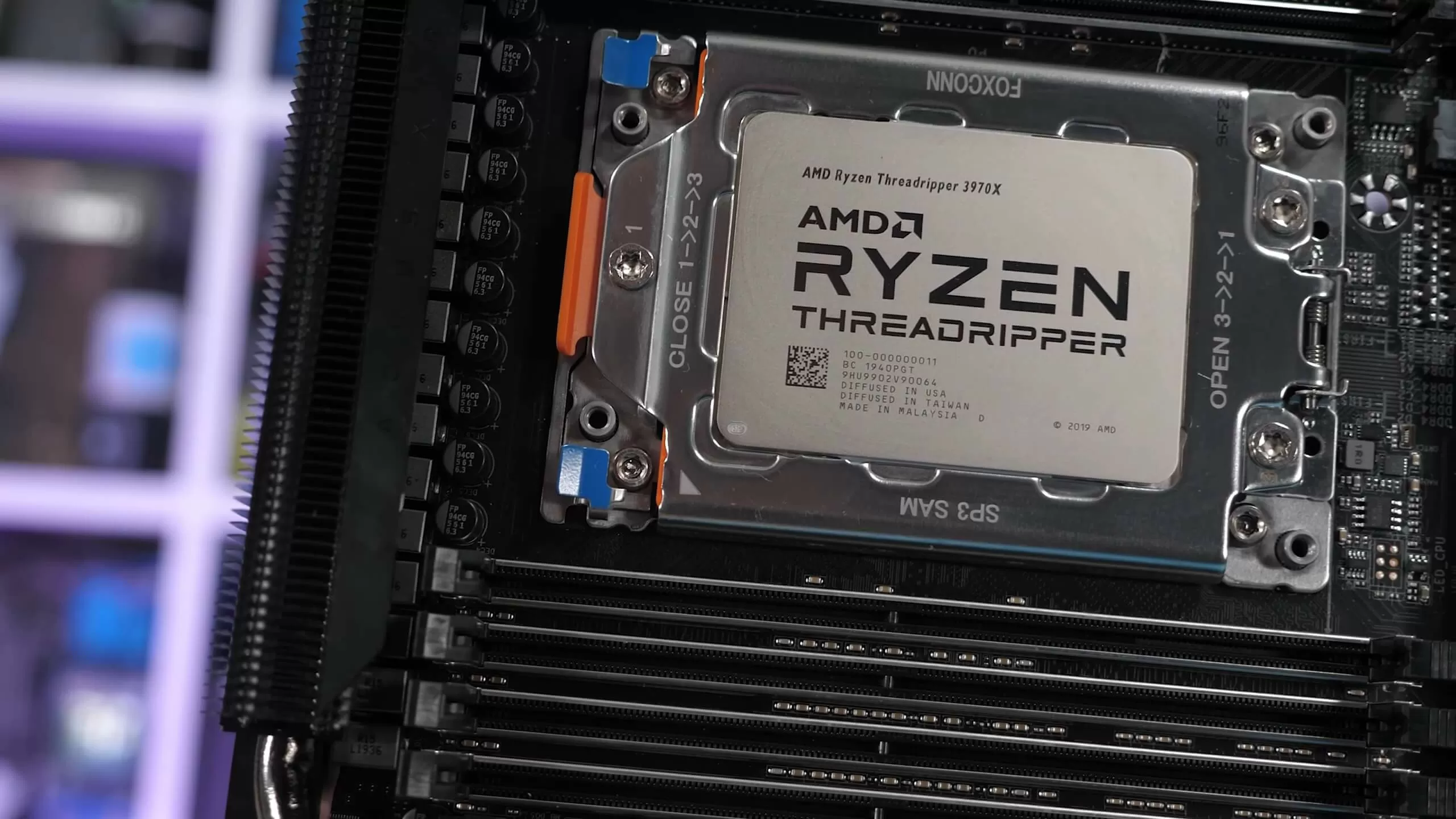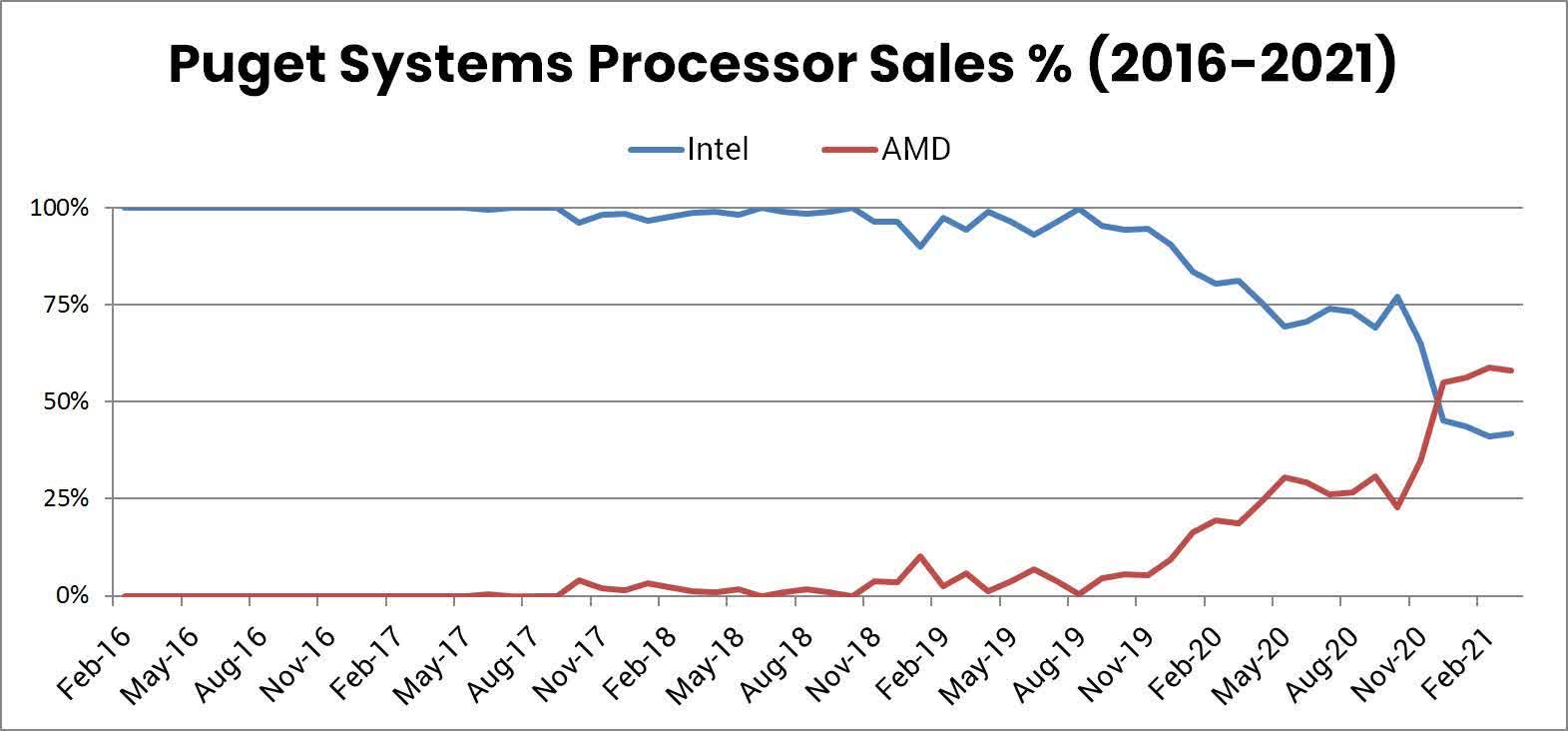TL;DR: AMD's march from "second-choice option" toward parity with Intel in the CPU space continues, and nowhere is that better illustrated than in the sales data of Puget Systems. The custom computer builder recently saw team red's processors appearing in more than half the systems it builds. That's an especially impressive feat as the company previously dropped AMD CPUs from its configurations because they were so unpopular.

Seattle-based Puget Systems, which specializes in high-performance workstations, writes that AMD processors appeared in over half its PCs back in 2006. But Intel started dominating the market following the launch of its Core 2 processor line. Just under a decade later, Puget quietly dropped AMD CPUs from its configuration options amid falling sales numbers.
Puget re-introduced AMD processors to its systems in 2017, and while the processors did spend two more years with a single-figure share, that started to change in late 2019. This was soon after the Ryzen 3000 series arrived, which offers high core-counts and blistering performance at a much lower cost that Intel's HEDT chips.
The launch of the Threadripper 3000 chips gave the company another boost. Being perfect for content creation, engineering, and data science workflows while costing less than Intel's Xeon range meant more Puget customers opted for an AMD-powered system, leading to red chips becoming the most popular option.
AMD has long been eroding Intel's share of the CPU market, though Q4 saw Chipzilla claw back share for the first time in three years—mostly due to AMD's processor shortages.
Despite the gains, AMD is estimated to hold just 20% – 30% of the overall CPU desktop space, but according to the latest Steam Hardware Survey, the gap between it and Intel gets a little smaller every month.
Thanks, Tom's Hardware
https://www.techspot.com/news/88889-amd-passes-intel-most-popular-choice-among-puget.html
